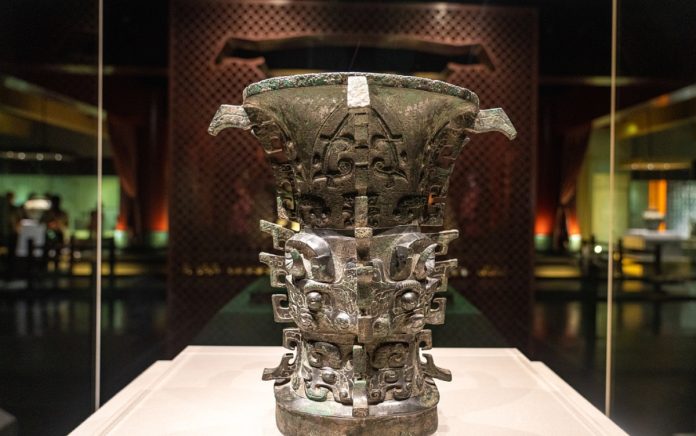The journey from the ancient totems to the auspicious symbols of the Loong, or Chinese dragon, which gradually evolved into a spiritual symbol and cultural icon for the Chinese people, has played a crucial role in China’s vast history spanning 5,000 years.
Loong Chenchen, as the mascot of the 2024 Spring Festival Gala of China Media Group (CMG) in the Year of the Loong, seamlessly integrates elements from China’s 5,000-year history of national treasures in its unique design.
The design of the mascot’s face was inspired by a loong-shaped artifact made up of over 2,000 pieces of turquoise that was unearthed from an ancient aristocrat’s tomb at the Erlitou Archaeological Site in the Yanshi District of Luoyang City, Henan Province. This artifact, now housed in the China Archaeological Museum, testifies to the ancestral worship of the loong as a totem dating back to the Xia Dynasty (2070-1600 BC).
Incorporating elements from a cloud-patterned bronze artifact from the Spring and Autumn Period (770-476 BC) known as a “jin” in Chinese, Loong Chenchen’s eyebrows and shoulders evoke the artistic imagination and expression of China’s ancient craftsmen. Unearthed in 1978 in Xiasi, Xichuan County, Henan Province, this bronze artifact is now held in the permanent collection of the Henan Museum.
The design of Loong Chenchen’s abdomen and spine was inspired by the “He Zun,” which is a sacrificial vessel made by a nobleman from the early Western Zhou Dynasty (1046-771 BC) named He. It was unearthed in 1963 in Baoji City, Shaanxi Province and is now housed in the Baoji Bronze Ware Museum.
Designers of Loong Chenchen’s fins drew inspiration from a gilded walking loong, a relic from the Tang Dynasty (618-907) showcased in the Xi’an Museum. Historical records suggest that the Tang Dynasty’s sacrificial ceremonies included a loong casting ritual, and the intricate walking loong may have played an important role in this ancient tradition.
And the design of Loong Chenchen’s claws was inspired by the dragons on the Nine-Dragon Wall at the Palace Museum in Beijing. The Nine-Dragon Wall is a type of ancient architectural screen designed to demarcate space. The three renowned Nine-Dragon Walls in China – one in the Forbidden City, one in Beihai Park, and one in Datong, Shanxi Province – stand as testaments to the historical significance of these structures in defining spatial boundaries.




